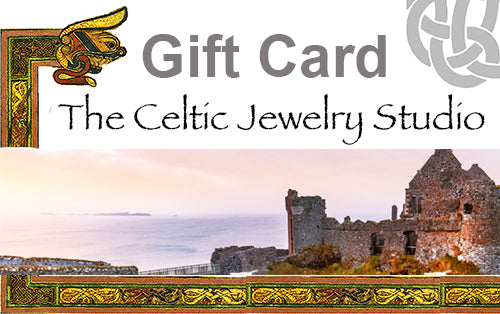Scottish Shortbread and Its History

About Scottish Shortbread
A traditional Scottish shortbread recipe makes the most mouth-wateringly (yes, I know not a real word!) delicious treat. But over the centuries the ingredients used have changed quite a bit - and if a 12th century Scot was to get a taste of modern-day shortbread, he might get quite a surprise! Today's recipes use butter and flour to produce that exquisite, melt-in-your-mouth texture and flavor.
The first shortbread was made from remnants of bread dough (hence the 'bread' part in the name) and contained oatmeal and yeast. It was then sprinkled with sugar and baked slowly in a cool oven. This produced a very hard, dry biscuit-bread. A handy, easily-portable snack which didn't spoil quickly.
Try putting a piece of today's shortbread in your pocket and see what happens - it's an entirely different 'animal'!
Originally the butter-shortbread variety was expensive and most people only got to taste it on special occasions. These included weddings, Christmas, Hogmanay (New Year's Eve), Burn's Supper (a celebration in honor of the birth of Scotland's famous poet Robert 'Robbie' Burns, January 25 each year) and other 'high days and holidays'.
Shortbread has several rituals and traditions associated with it. Historically this tasty treat played a part in welcoming new brides in the Shetland and Orkney Isles to their marital homes; as the bride and groom crossed the threshold a decorated shortbread (called the 'Bride's Bonn) was broken over their heads! It is also still one of the foods offered to 'first-footers' (those going door to door on Hogmanay to welcome in the New Year).
Even the way Scottish shortbread is decorated is symbolic and traditional. The edges of the circular shortbreads are decorated by pinching with the thumb and forefinger, or making cut-marks with a knife, and it's believed that this is a nod towards the Scots early sun-worshipping days as these pinched edges symbolize the sun's rays. The center of the shortbread circles, and the length of the shortbread bars are pricked with a fork to complete the decorations.
I'll bet you didn't know that there's also a 'National Shortbread Day', which falls on January 6 every year
There are three different 'styles' of Scottish shortbread:
- A large circle, which is divided into 'slices' (like a pizza!). These are called 'shortbread petticoat tails' - probably because the design looks very similar to the pattern used to make a full petticoat (worn under dresses) at this time.
* These were reported to be one of Mary Queen of Scots' favorites, and she is given credit for increasing the popularity of shortbread in the 16th century
- A rectangle which has been cut into strips or bars. These are called 'shortbread fingers'
- Individual small circular biscuits (like cookies). These are called 'shortbread rounds'
Best Scottish Shortbread Recipes
Recipe #1
Ingredients:
1 lb (450g) butter
8 oz (225g) castor sugar (uperfine sugar)
1 lb (450g) sifted plain flour (all-purpose flour)
8 oz (225g) rice flour
pinch of salt - if using unsalted butter
Directions/Method:
Set oven to 375F - 190C - Gas Mark 5
Cover an ungreased baking sheet (cookie tray) with grease-proof paper (wax paper).
Mix flour and rice flour, then add salt (if you're using unsalted butter), and sift these dry ingredients at least twice, preferably three times.
Cream butter and sugar together with a wooden spoon (be warned - this takes serious 'elbow grease' but produces a better end result!). Add the sifted ingredients and mix together by hand until you have a soft dough.
* The shorter the time it takes to mix the ingredients, and the less 'handling' is involved, the shorter, crumblier and more delicate the texture of the shortbread will be.
DON'T be tempted to 'knead' at the dough, as this will make the it 'tough' - and the finished result won't be what you are hoping for.
Form dough into a ball, and then (depending on what shape you want to make your shortbread).......
Either
Press gently into a Shortbread Mold/Pan (this one is decorated with the Scottish Thistle to make your finished product look as amazing as it tastes!).
The dough should be about 3/4 inch - just under 2cms - thick.
If you're using a shortbread mold, it's a good idea to dust it with powdered sugar (called 'icing sugar' in the UK) and put it in the fridge for a short while before baking.
Or you can press the dough into a circle about 8 - 10 inches across, and again about 3/4 inch thick and mark out 16 'slices' with a knife (just don't cut all the way through) and put this on the prepared tray as above. Or you can use any round cake pan.
These will be your 'Petticoat Tails'.
Decorate by pinching the outer edges of the dough between thumb and forefinger, and then use a fork to prick the rest of the dough.
Or
On a lightly floured surface, press (or use a rolling pin - sparingly!) dough out until it's about 1/2 inch thick, and rectangular in shape and mark into bars that are approx. 3" x 1" (these are called 'Shortbread Fingers').
Prick the top with a fork.
Of course you can cut the dough into any shape you want, and holiday shortbread santas, bells, snowmen etc. are popular and makes beautifully decorated shortbread to snack on with a hot drink on cold winter days!
Bake in oven pre-heated to 375F for 20 minutes, then reduce to 350F (180C/Gas Mark 4) and continue to bake until shortbread is pale golden. This could be between 45 mins and 1 hour, depending on exactly how thick you've made the shortbread.
The color is the best indicator that the shortbread is 'done'. You're aiming for a lovely pale gold all over, if the edges start to look dark then you're in danger of burning them!
Allow to cool in pan, then remove to wire cooling rack. When thoroughly cooled these can be stored in an air-tight cookie tin or container.
Small circular Scottish shortbread cookies (known as 'rounds') can be made by cutting shapes from the dough using a round cookie cutter that is about 1 1/2 inches in diameter.
These little cookies can be decorated the same way as the larger circle above.
Smaller 'Rounds' or specialty 'holiday' type shortbread cookies need less baking time, usually somewhere around 20 minutes. Again rely on the color of the shortbread to know when it's done. This can take a little practice, but is well worth the effort!
Recipe #2
Ingredients
- 2 cups butter, softened
- 1 cup packed brown sugar
- 4 to 4-1/2 cups all-purpose flour




